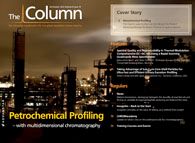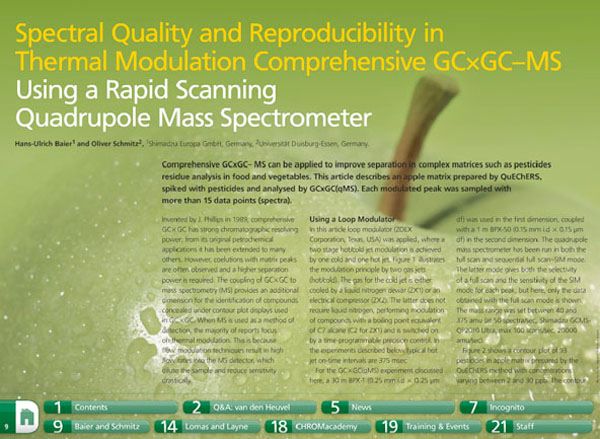Spectral Quality and Reproducibility in Thermal Modulation Comprehensive GCxGC-MS Mass Spectrometer Using a Rapid Scanning Quadrupole
The Column
Invented by J. Phillips in 1989, comprehensive GCXGC has strong chromatographic resolving power; from its original petrochemical applications it has been extended to many others. However, coelutions with matrix peaks are often observed and a higher separation power is required.
Invented by J. Phillips in 1989, comprehensive GC×GC has strongchromatographic resolving power; from its original petrochemicalapplications it has been extended to many others. However, coelutionswith matrix peaks are often observed and a higher separation power isrequired. The coupling of GC×GC to mass spectrometry (MS) providesan additional dimension for the identification of compounds concealedunder contour plot displays used in GC×GC.

Analysis of Pesticides in Foods Using GC–MS/MS: An Interview with José Fernando Huertas-Pérez
December 16th 2024In this LCGC International interview with José Fernando Huertas-Pérez who is a specialist in chemical contaminants analytics and mitigation at the Nestlé Institute for Food Safety and Analytical Sciences at Nestlé Research in Switzerland, In this interview we discuss his recent research work published in Food Chemistry on the subject of a method for quantifying multi-residue pesticides in food matrices using gas chromatography–tandem mass spectrometry (GC–MS/MS) (1).
The Use of SPME and GC×GC in Food Analysis: An Interview with Giorgia Purcaro
December 16th 2024LCGC International sat down with Giorgia Purcaro of the University of Liege to discuss the impact that solid-phase microextraction (SPME) and comprehensive multidimensional gas chromatography (GC×GC) is having on food analysis.







